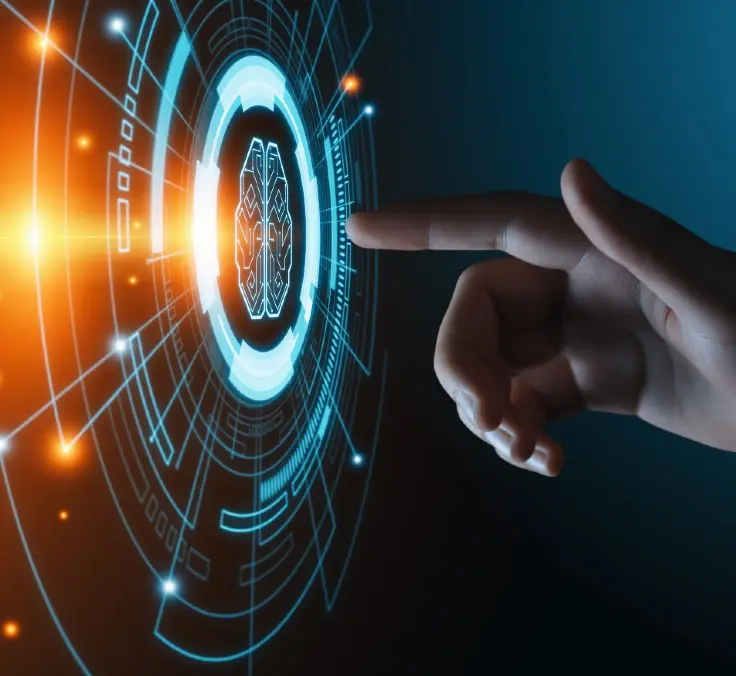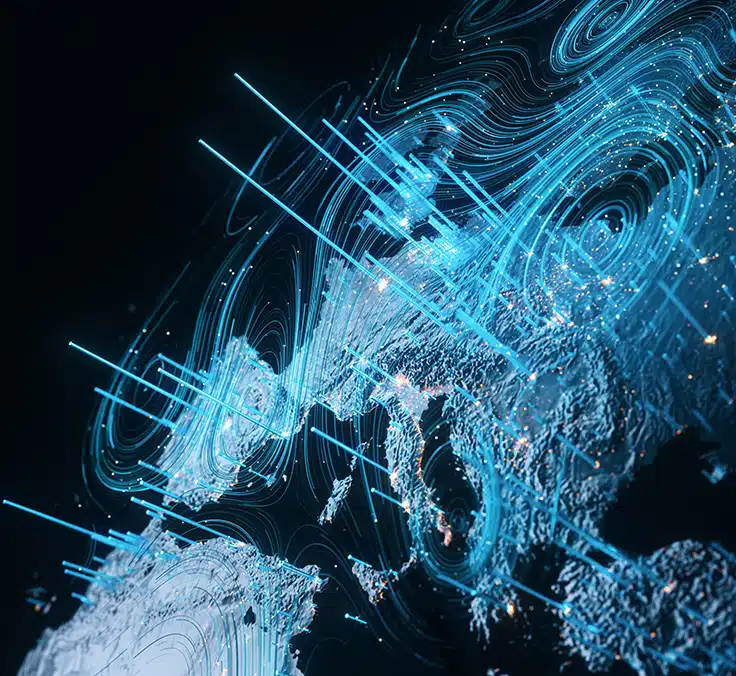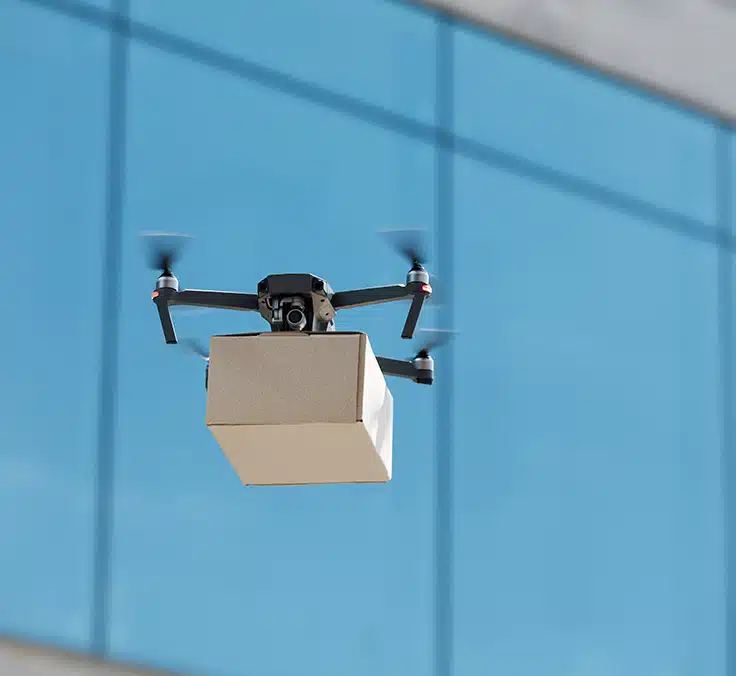INNOVATION | 08.10.2025
How will humans interact with machines in the future?
Interaction is set to evolve in the coming years. Will AI live up to its promises? Will assistants become central to everyday life? How will we work and socialize? The outlook remains uncertain. That is why at MAPFRE we have conducted a scenario analysis to explore what future interactions might look like. In this article we analyze the relationship of humans with machines.
The way in which humans interact with each other and with technology is in the midst of transformation. The evolution of artificial intelligence (AI), the expansion of virtual assistants, and the integration of smart devices are redefining how we communicate, work, and make decisions. The line between human interaction and automation becomes increasingly diffuse, with systems that not only respond to our needs, but also anticipate them.
The development of new interfaces and interaction methods, such as augmented reality, holograms, and brain-computer interfaces, opens up new possibilities for communication and information management. The integration of these advances with generative artificial intelligence and environmental computing will allow for more fluid, natural, and efficient experiences. However, the pace of adoption of these technologies, their accessibility, and the regulations surrounding them will define whether they actually represent a structural transformation or simply incremental improvements.
“As we move toward a more complex and interconnected digital environment, the interaction between humans and technology will continue to evolve. The challenge is not only to harness these advances to improve efficiency and user experience, but also to ensure that the balance between automation and authenticity is maintained, allowing technology to amplify our abilities without replacing what makes us human,” comments Bárbara Fernández, Deputy Director of Corporate Innovation at MAPFRE.
In this context, we at MAPFRE have developed the report The Future of Interaction: the role of interaction in a world shaped by smart assistants. This document outlines what human-machine interaction will look like in 2035, presented through four divergent scenarios, each shaped by the evolution of artificial intelligence, the adoption of advanced devices, and the regulatory framework governing their implementation.
Each scenario presents unique opportunities and challenges, impacting not only how we work and socialize but also key sectors such as insurance, where adapting to these changes will be crucial to remain relevant in the future. You can see the full report here.
What can we expect from human-machine interactions in the coming years?
The future of interaction will be marked by more immersive, dynamic hybrid models with a high degree of contextualization. The connection between humans and machines will evolve toward goal-oriented interactions, moving beyond the need to define detailed processes (prompting). As technology assumes control over most transactional and operational processes, exclusively human interactions will focus on creative, social, and reflective activities.
In this new ecosystem, regulation will play a key role in guaranteeing the privacy, ethics, and sustainability of interactions, protecting user autonomy and avoiding the abuse of automated systems.
“In the relationships between humans and machines, there will be three key concepts that will define the coming years: fluidity, accessibility, and privacy,” explains Bárbara Fernández. “AI will better understand natural language, allowing intuitive experiences and accurate responses in real time,” he adds.
Thanks to the expansion of sensors and IoT devices, digital environments will autonomously adapt to users' needs, optimizing everything from the home to the workplace. In addition, AI assistants will play a key role in organizing everyday life, facilitating tasks, and improving productivity while always focusing on privacy and responsible use of data.
What implications does this type of interaction have for the insurance industry?
In an environment dominated by machine-to-human (and machine-to-machine) interaction and automated transactions, human-to-human interaction will be reserved for key customer moments.
In situations with a high psychological or emotional burden, which require complex explanations and a high degree of empathy, human attention will be essential. Therefore, it will be essential to identify these critical moments and define appropriate mechanisms to assign the channel and the form of interaction most appropriate for each person and each situation.
“For the insurance industry, this will mean that our call centers will have to be prepared for the type of attention required by customers.” There will be times when an assistant will be enough to resolve questions and meet needs efficiently, but many other times it won’t,” predicts the deputy director. “Agents will be fundamental, and will oversee the entire value chain of customer service.” The key will be to provide them with the necessary solutions so that the interaction takes place effectively and optimally, always without sacrificing empathy and the human aspect,” he adds.
The impact of smart assistants on customer relationships, along with the rise of embedded insurance on orchestration platforms (technology platforms for integrated insurance that typically connect front-end distribution partners with back-end insurance companies), will drive transformations across the value chain. This will directly affect the dynamics of interaction between companies and their users or customers.
Finally, AI agents, both personal and corporate, have already burst into our lives. Generative AI tools are being adopted rapidly and naturally by individuals and companies, and changes are beginning to be perceived, although still in a subtle way.
For example, it is already changing the way we search for information and how it is presented to us. These new search engines will continue to evolve until they become the main channel, overtaking websites and traditional applications.
As their autonomy increases, users will be able to delegate actions to them, such as the renewal or cancellation of an insurance policy, which may lead to situations where companies are interacting with a machine that acts on behalf of the customer.
“In the future of interaction, and in the impact of all these changes, it will be essential to understand customers’ needs and preferences, adapting to new channels, enabling multimodality, and ensuring a convenient, seamless experience that integrates the physical and digital worlds in an accessible way for everyone,” concludes Bárbara Fernández. “It will also be essential to increase the capabilities of our employees to ensure excellent interaction.” Although this will be supported by technology when necessary, the focus is and will remain on designing and offering products and services that are increasingly adapted to each person's needs,” she concludes.
RELATED ARTICLES:




